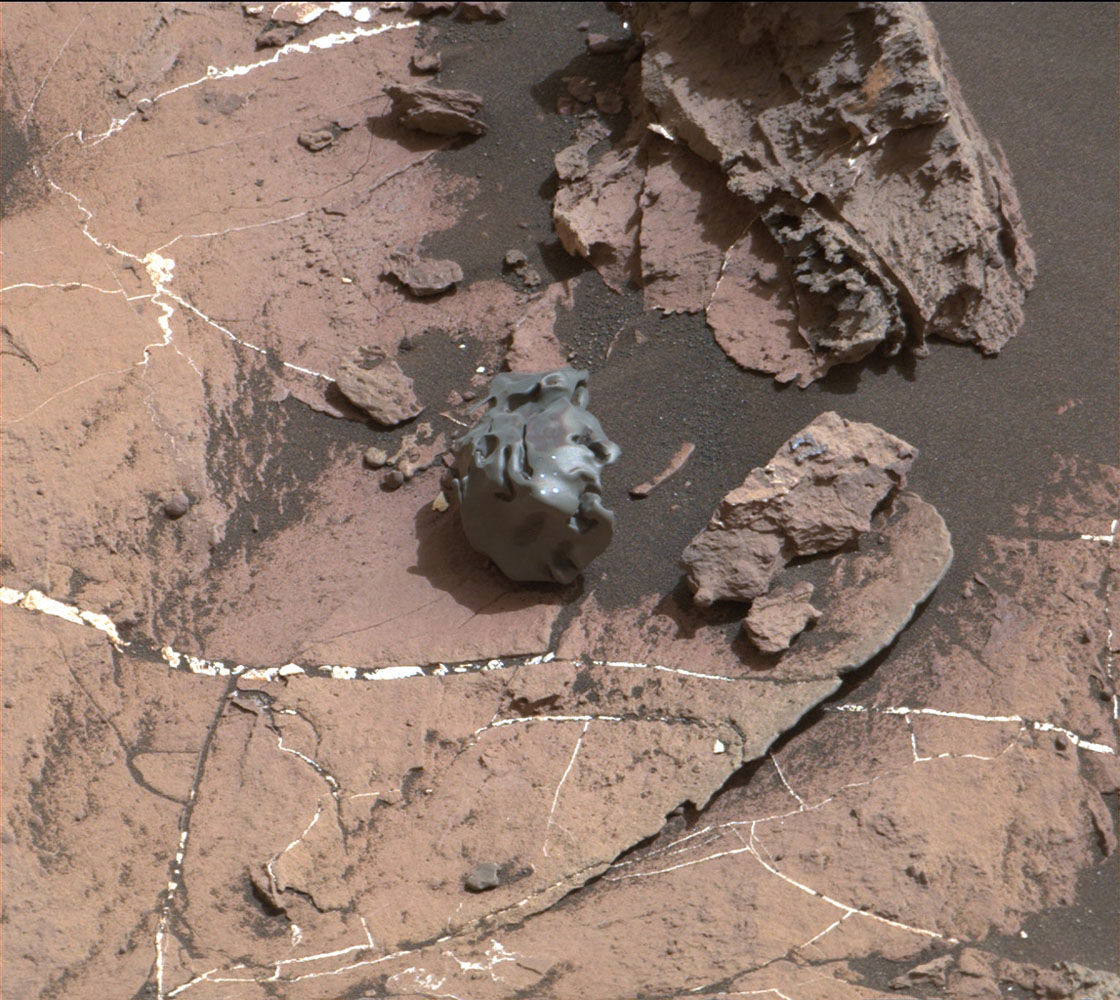
The dark, smooth-surfaced rock at the center of this Oct. 30, 2016, image from the Mast Camera (Mastcam) on NASA’s Curiosity Mars rover was examined with laser pulses and confirmed to be an iron-nickel meteorite. It is about the size of a golf ball. Credit: NASA/JPL-Caltech/MSSS
It’s been more than four years since NASA’s Curiosity rover landed on Mars, enabling researchers to study the shape and composition of the planet’s landscape in a mission that had originally been planned to last less than two years. Even as the rover’s instruments begin to show signs of wear and tear, however, scientists are still making discoveries.
For the first time on Mars, researchers used a spectrometer to zap an object the size of a golfball with a laser this week to confirm that it is an iron-nickel meteorite that fell to the planet’s surface, according to NASA and the Jet Propulsion Laboratory. Although such objects are common on Earth and to be expected on the Red Planet as well, studying them in tandem with what we already know about the planet’s atmosphere could reveal a wealth of new information about the history of the solar system.
Horton Newsom, a researcher from the University of New Mexico, Albuquerque, said the object, known as Egg Rock, could carry within its core information that differs from asteroids currently being studied.

